Solid foundations: the Yves Saint Laurent museum opens in Marrakech
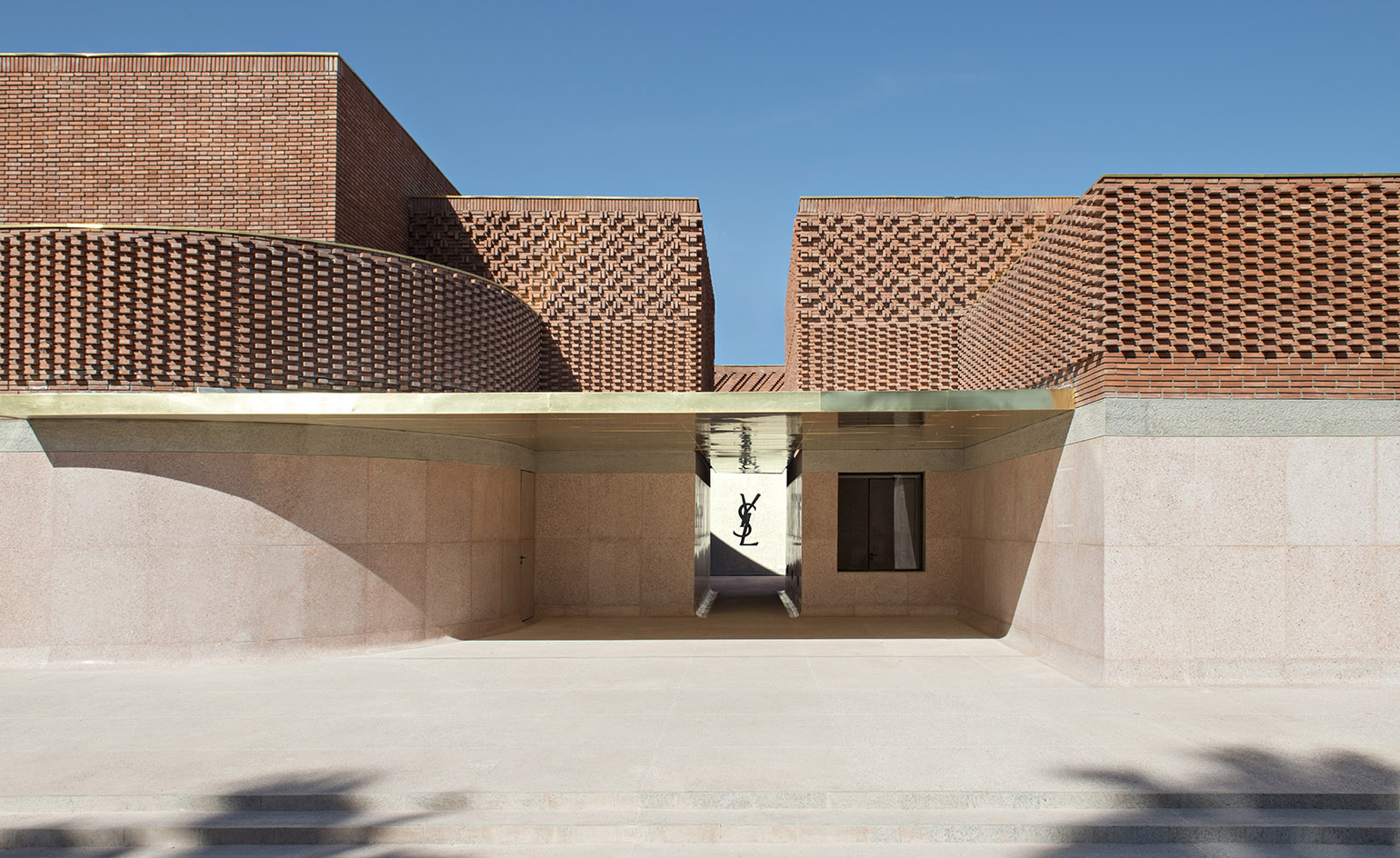
Wrapped with terracotta brick and earthen-coloured terrazzo, the new and much-anticipated Yves Saint Laurent museum in Marrakech melds effortlessly into its ochre surrounds. Its understated façade, with its blend of swooping curves and straight lines, is a fitting tribute to the elegance of the late designer’s couture creations. Upon its opening tomorrow, the museum is set to become the jewel in the crown of the French couturier’s Moroccan legacy, which also includes the neighbouring 12 acre Jardin Majorelle, and the Berber Museum, which opened in 2011.
The Jardin Majorelle is already one of the most visited tourist sites in Morocco: 800,000 visited last year and 9,000,000 are expected to have passed through the gates by the end of 2017. Opened to the public in 1947 by Jacques Majorelle, the late Yves Saint Laurent and Pierre Bergé fell in love with the Jardin during their first trip to Marrakech in the sixties. When they realised it was at risk of closure in the 80s, Bergé and Saint Laurent bought and restored it. After Yves died, Bergé donated the Jardin Majorelle and the Villa Oasis to their foundation in Paris. Quito Fierro, the garden’s public relations director, says that visiting numbers have dramatically increased in the past decade to the point where a timed entry system will have to be introduced.
In that time period, the city has seen the arrival of five-star destinations such as the Royal Mansour – a jaw-droppingly opulent medina – one equipped with private riads and a lobby that has to be seen to be believed. Also drawing in the well-heeled crowds is Sir Richard Branson’s captivating Moroccan hideout, Kasbah Tamadot. Nestled in the Atlas Mountains, just an hour’s drive away from the heart of the city, the Kasbah serves as a luxurious escape from the hustle and bustle of Marrakech.
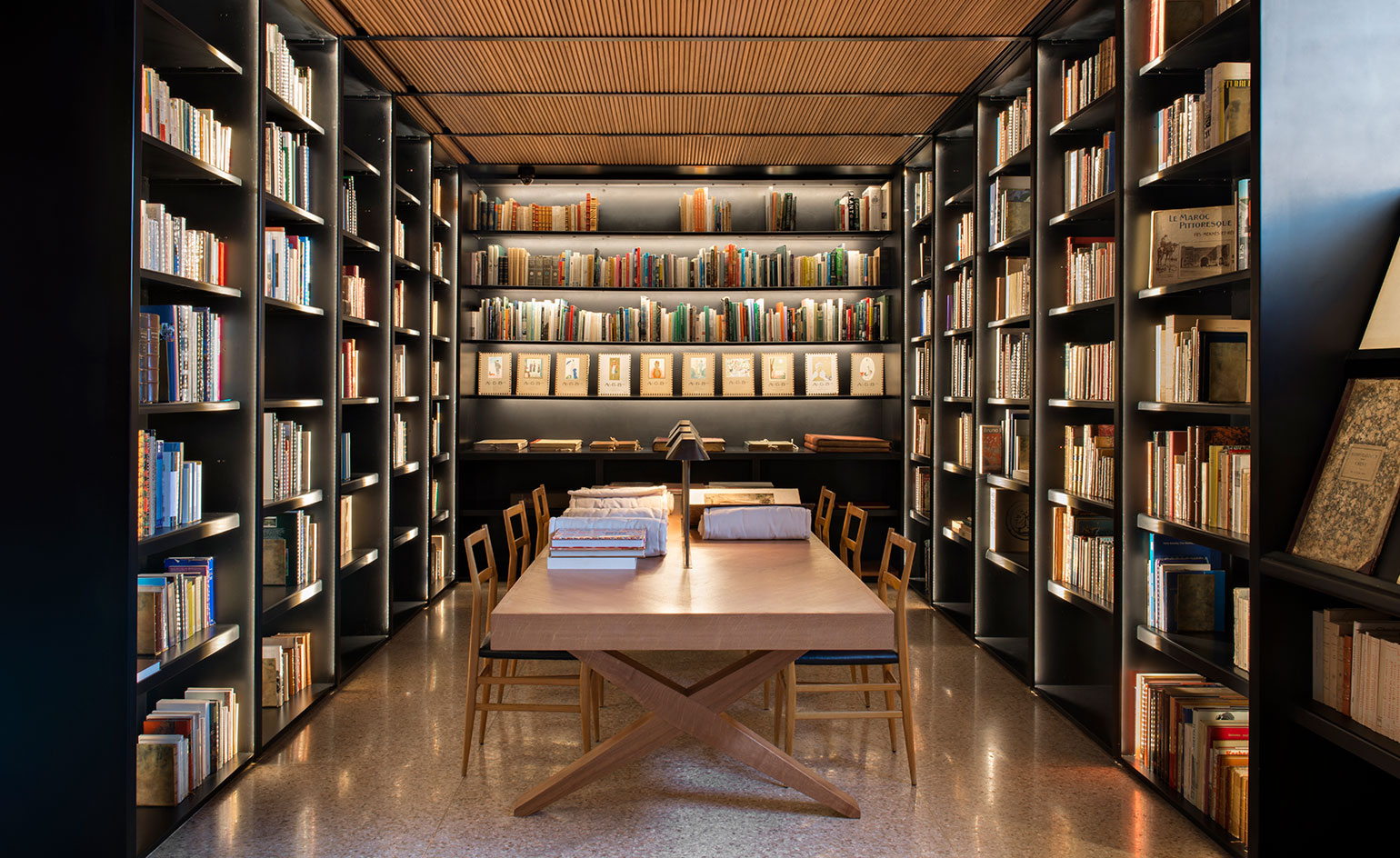
The library displays a selection of books related to Morocco, Berber culture, architecture, botany and costume. The ceiling is made from laurel branches using a traditional Moroccan technique that has been reinterpreted by Studio KO
As the first fashion museum in Africa, the institution will dramatically boost the Marrakech’s reputation as a cultural hotspot. ‘When Yves Saint Laurent first discovered Marrakech in 1966, he was so moved by the city that he immediately decided to buy a house here,’ the late Pierre Bergé told us before his death last month, when we went to document the museum’s construction for our September issue (see W*222). ‘It feels perfectly natural, 50 years later, to build a museum dedicated to his oeuvre, which was so inspired by this country.’
Designed by Paris-based Studio KO, the museum was Bergé’s personal project. He was its mastermind and driving force, overseeing every aspect of its design, construction and programming with his exacting eye. Visiting the site each month, Bergé lived to see the completed exterior, which was finished in July this year. ‘Pierre had worked with Studio KO previously on a 20th-century villa in Tangier, so he already knew them well,’ says museum director Björn Dahlstrom. ‘They are young and talented and I think they were absolutely the right choice for this project. Working with them was like working with family – very easy, they were dedicated. I think it would not have been so easy with a big-name architect.’
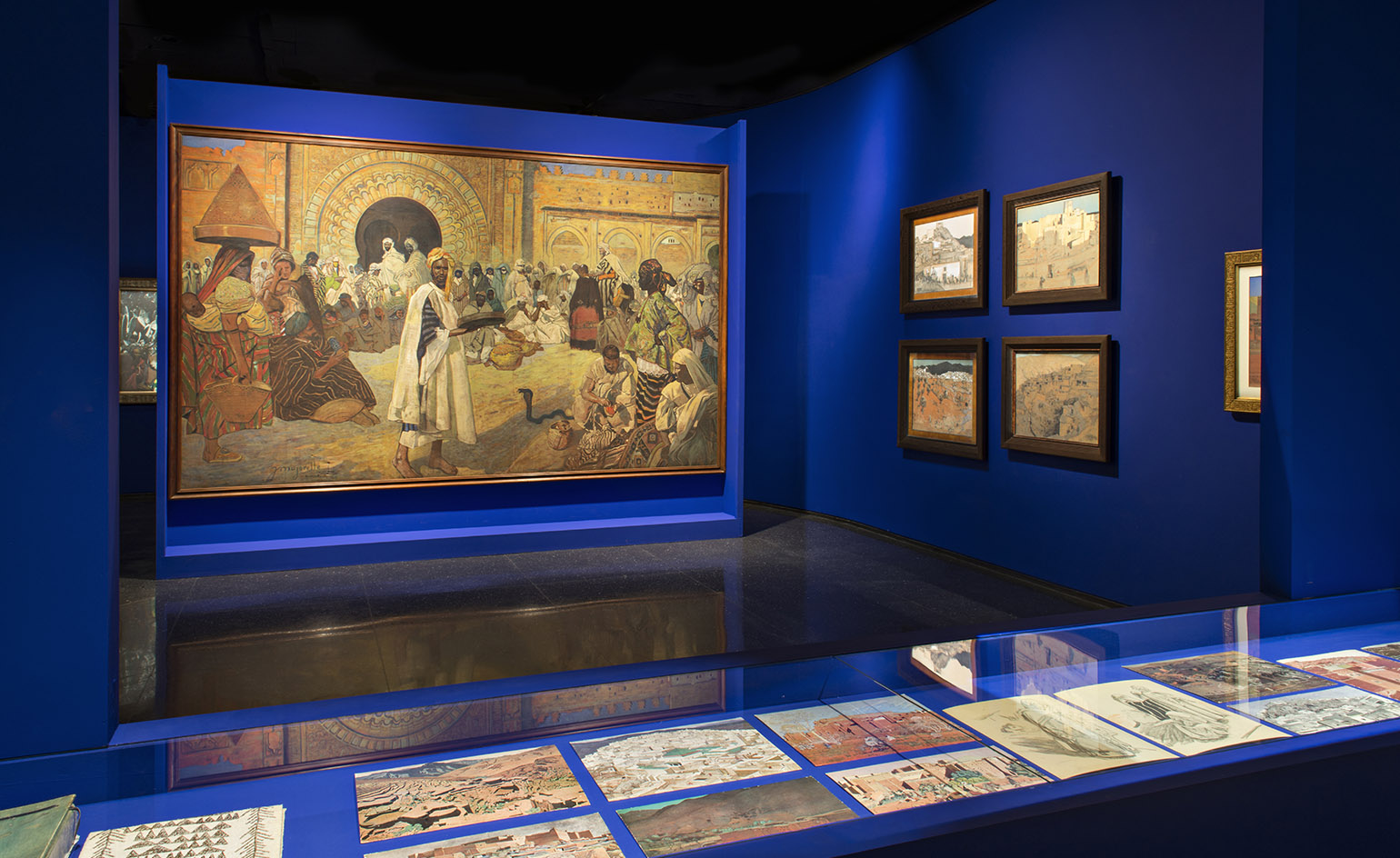
In the temporary exhibition space an inaugural show titled ‘Jacques Majorelle’s Morocco’ curated by Félix Marcilhac will offer the Moroccan public the chance to view 30 important works by the artist for the first time since his passing in 1962
Inside, the museum comprises a 400 sq m permanent exhibition space designed by Christophe Martin, a temporary exhibition space, a research library with over 6,000 volumes, a 150-seat auditorium, and a bookstore and terrace café. Its interiors are an elegant reinterpretation of traditional Moroccan materials such as local brick, brass, black granite, laurel branches and oak. All of the door handles and hardware are made locally by metalworkers in the medina. ‘The architects wanted to take these very traditional materials but use them in a very contemporary and modern way,’ says Dahlstrom. ‘Pierre insisted on materials such as the terrazzo, and in every shade – nougat, black, grey, pink, white – as well as the stained glass that you see in the entranceway.’
In the main exhibition hall, Martin has conjured an atmospheric show of 50 carefully chosen pieces that are displayed on mannequins lined up like regimented troops. The chosen pieces revolve around themes dear to Saint Laurent – masculine-feminine, black, Africa and Morocco, imaginary voyages, gardens, and art.
Spotlit in the darkness, the garments are backdropped by catwalk film and imagery, which are projected onto the walls. Upon entering, the designer’s drawings, fabric samples and sketches glide by across a wall of video screens that invite visitors to immerse themselves in Saint Laurent’s working process.
The museum will not only display the garments but also become a world specialist in conserving extraordinary collections. The museum’s basement levels will store 1,000 couture garments and accessories lent by the Fondation Pierre Bergé-Yves Saint Laurent in Paris, as well as 3,000 non-exhibited pieces from the Berber Museum at the Jardin Majorelle.
In the temporary exhibition space an inaugural show – titled ‘Jacques Majorelle’s Morocco’ and curated by Félix Marcilhac – will offer the public the chance to view thirty important works by the artist that have been lent by private and institutional Moroccan collections. ‘Pierre Bergé saw all of the sketches and paintings,’ says Dahlstrom of the three-month-long exhibition. ‘He signed off on all of it, everything. He was here on the ground overseeing every step of this project.’
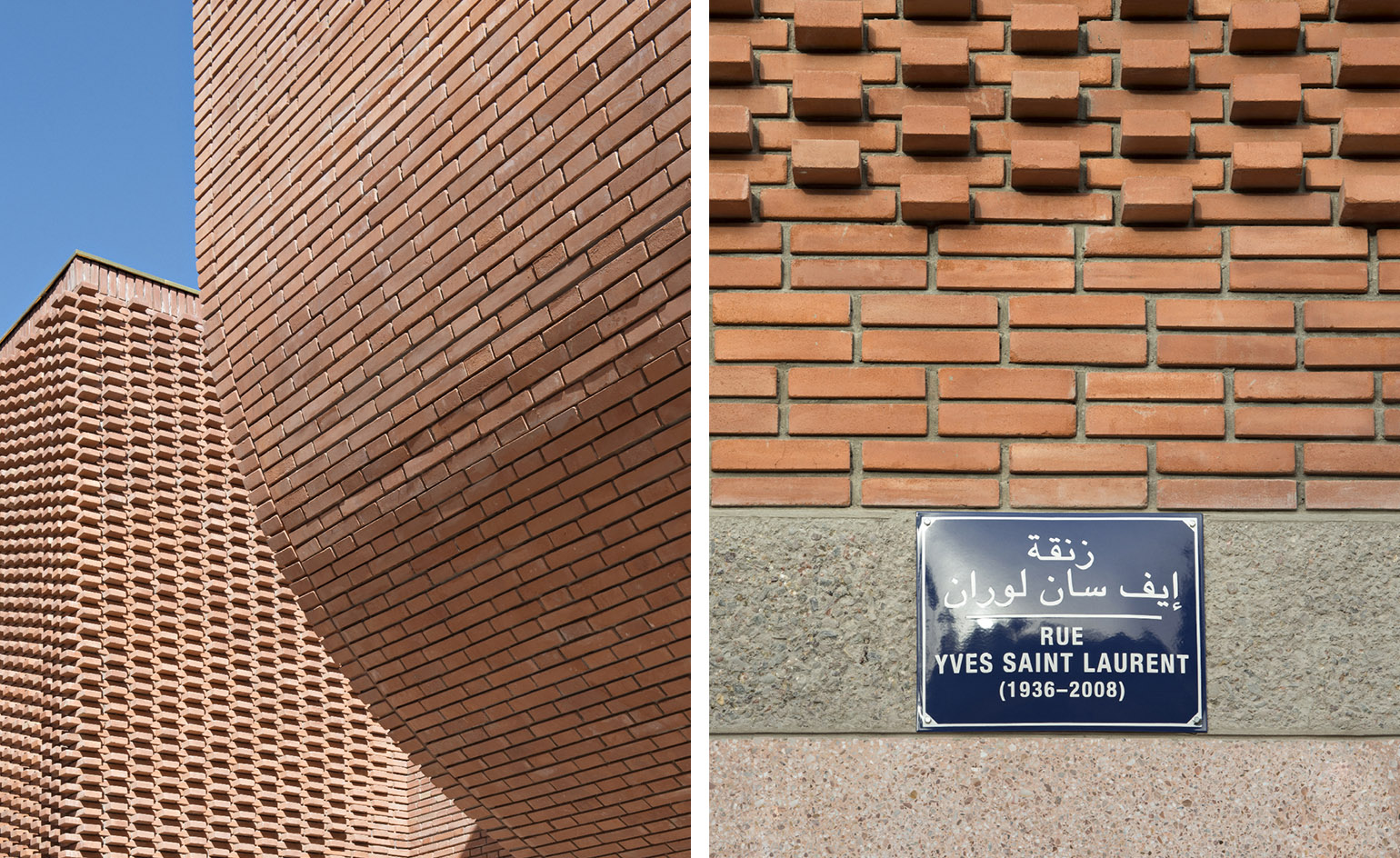
The museum was the personal project of Pierre Bergé, the long-time partner of Yves Saint Laurent who passed away last month, age 86
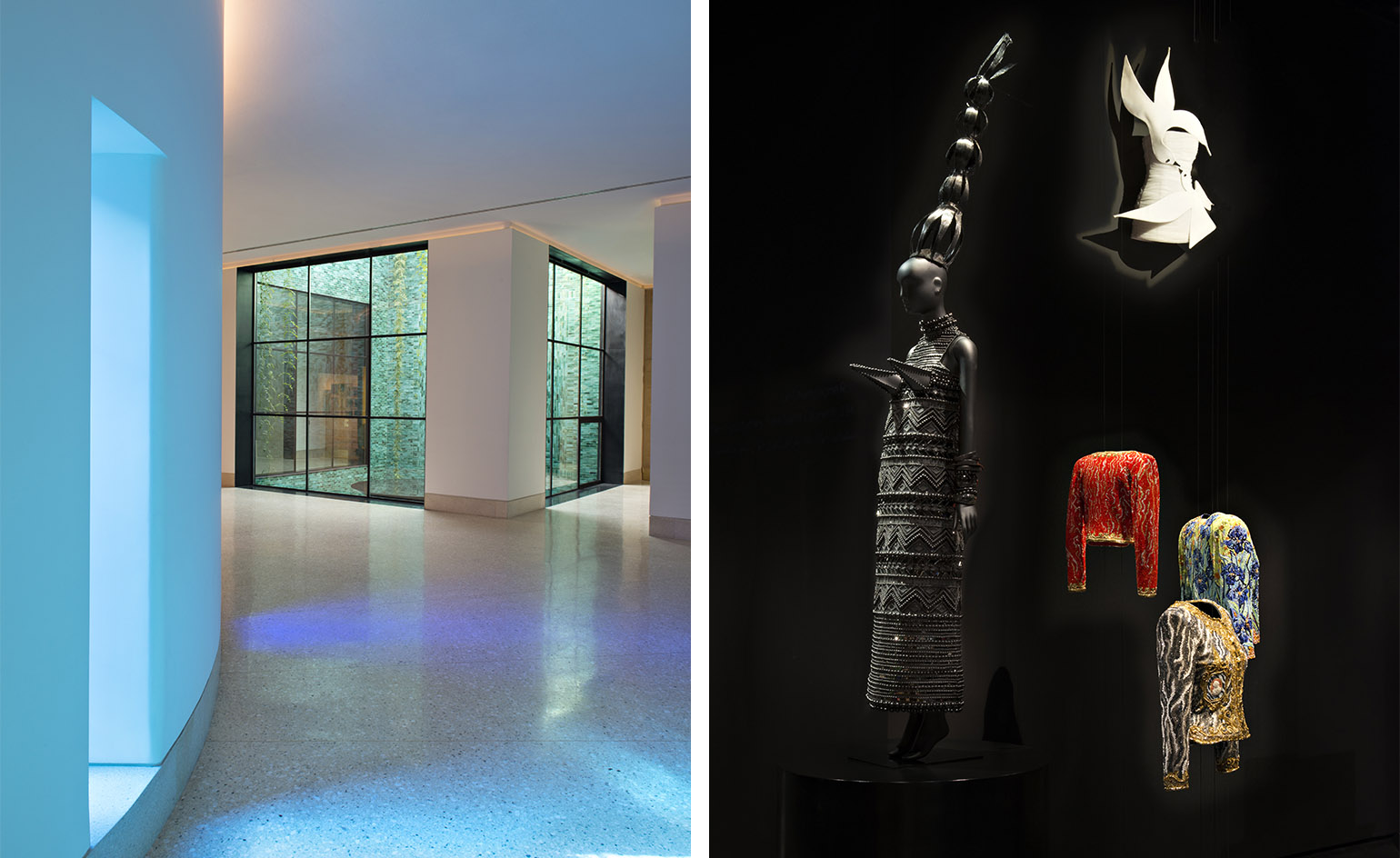
Left, a series of monochromatic stained glass windows that circle the curved entranceway wall are inspired by a type of traditional Moroccan-style stained glass - an element that Bergé insisted upon. Right, curated by Christophe Martin, the theatrically-lit permanent exhibition is rooted in Marrakech but tells the whole Yves Saint Laurent story. ‘Yves Saint Laurent had the realisation of colour when he first came to Marrakech, and that’s what Pierre Bergé wanted to communicate in this exhibition,’ explains museum director Björn Dahlstrom
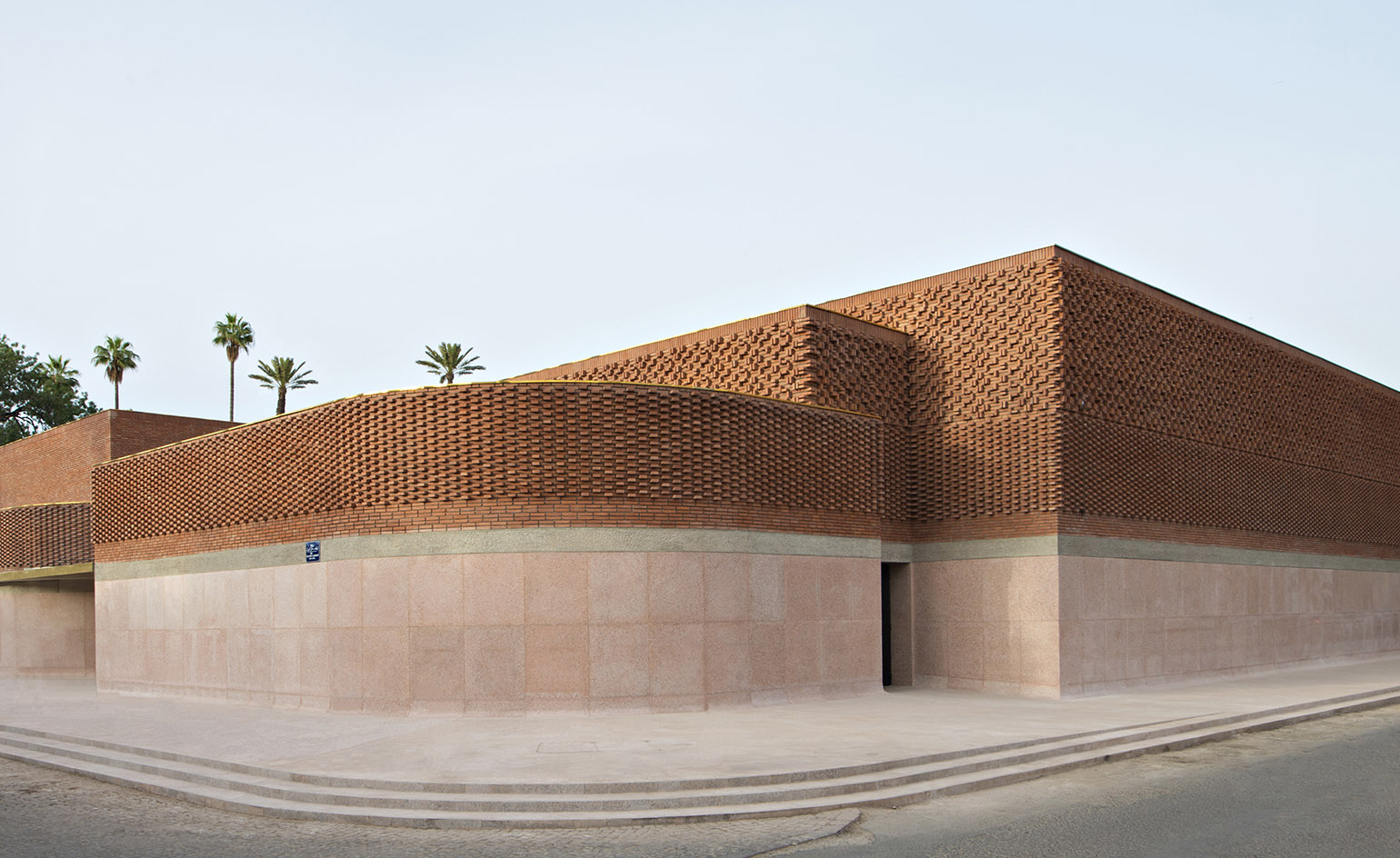
We chartered the construction of the museum in Wallpaper*s September Style Special issue
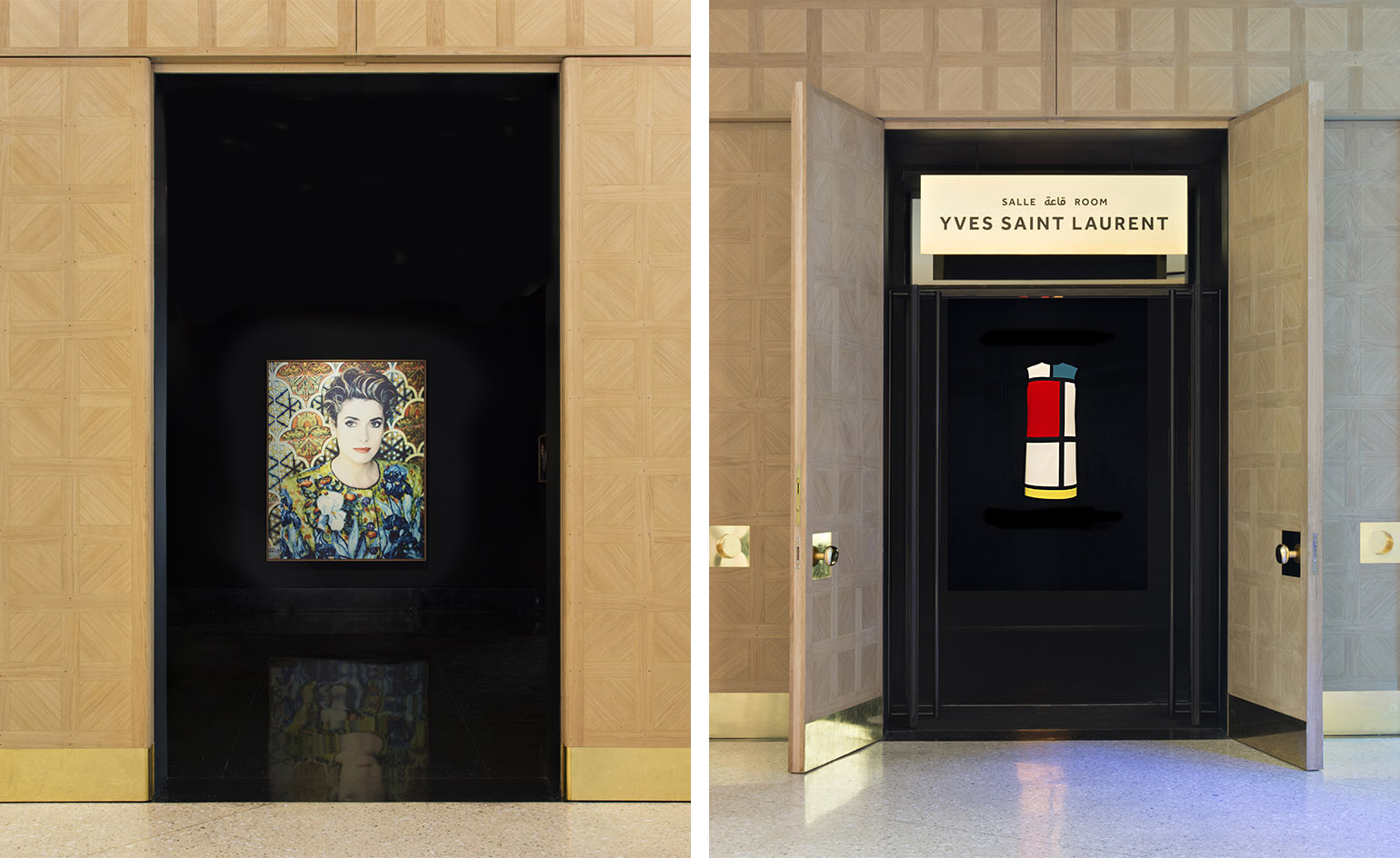
Left, A smaller gallery space is dedicated to Yves Saint Laurent’s connection to photography. Here visitors will find a series of photographs of Catherine Deneuve in Marrakech wearing iconic YSL garments that were shot for French Elle by German photographer André Rau in 1992. Right, The Mondrian dress from the 1965 Collection inspired by the Dutch De Stijl artist Piet Mondrian opens the show. ‘It was probably the most copied model in the history of fashion,’ says Dahlstrom. ‘The way that it’s displayed is to make the visitor question whether it’s a painting or a dress. It brings together both Saint Laurent and Mondrian as major artists of the twentieth century.’
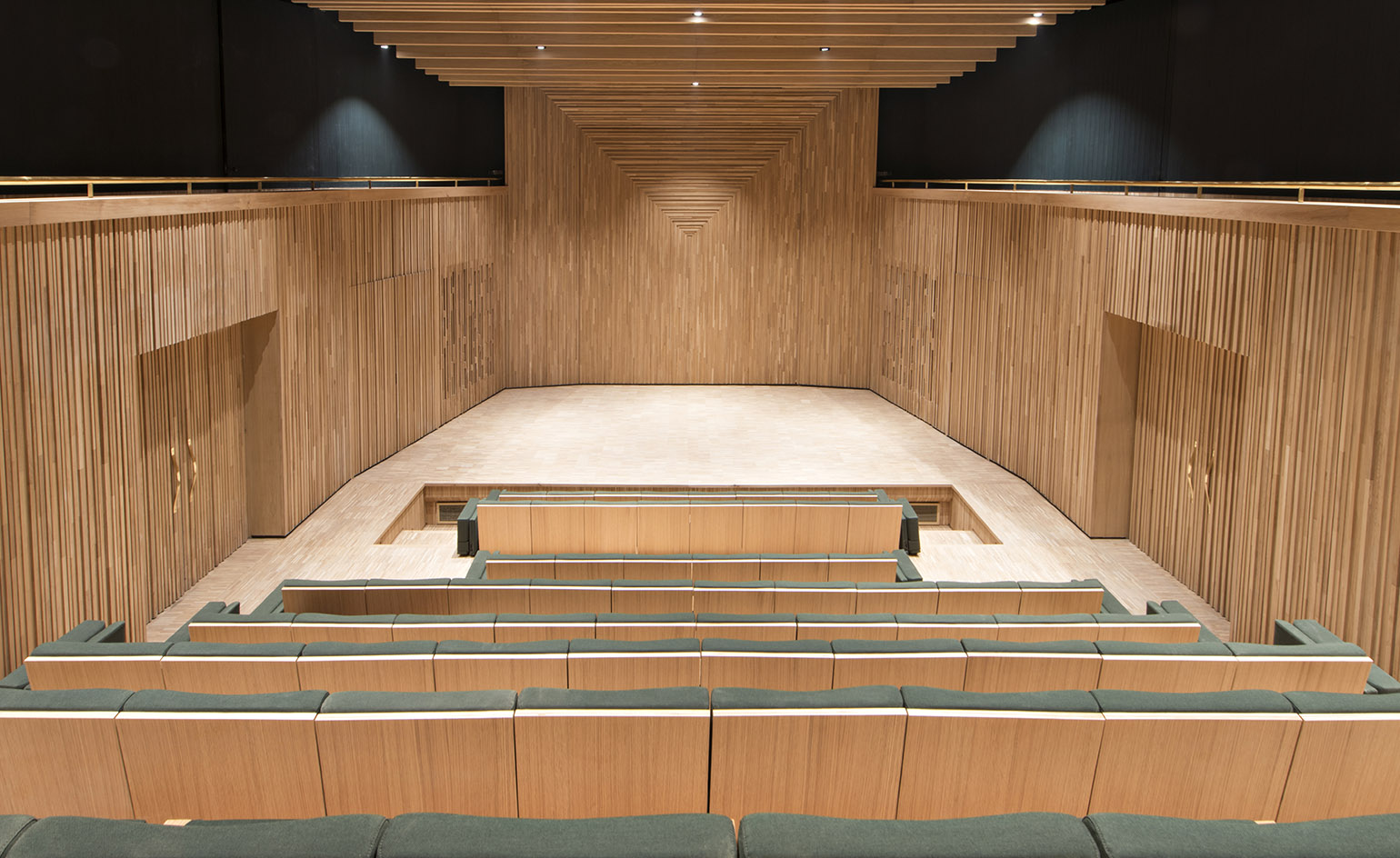
The museum space also features an 150-seat auditorium
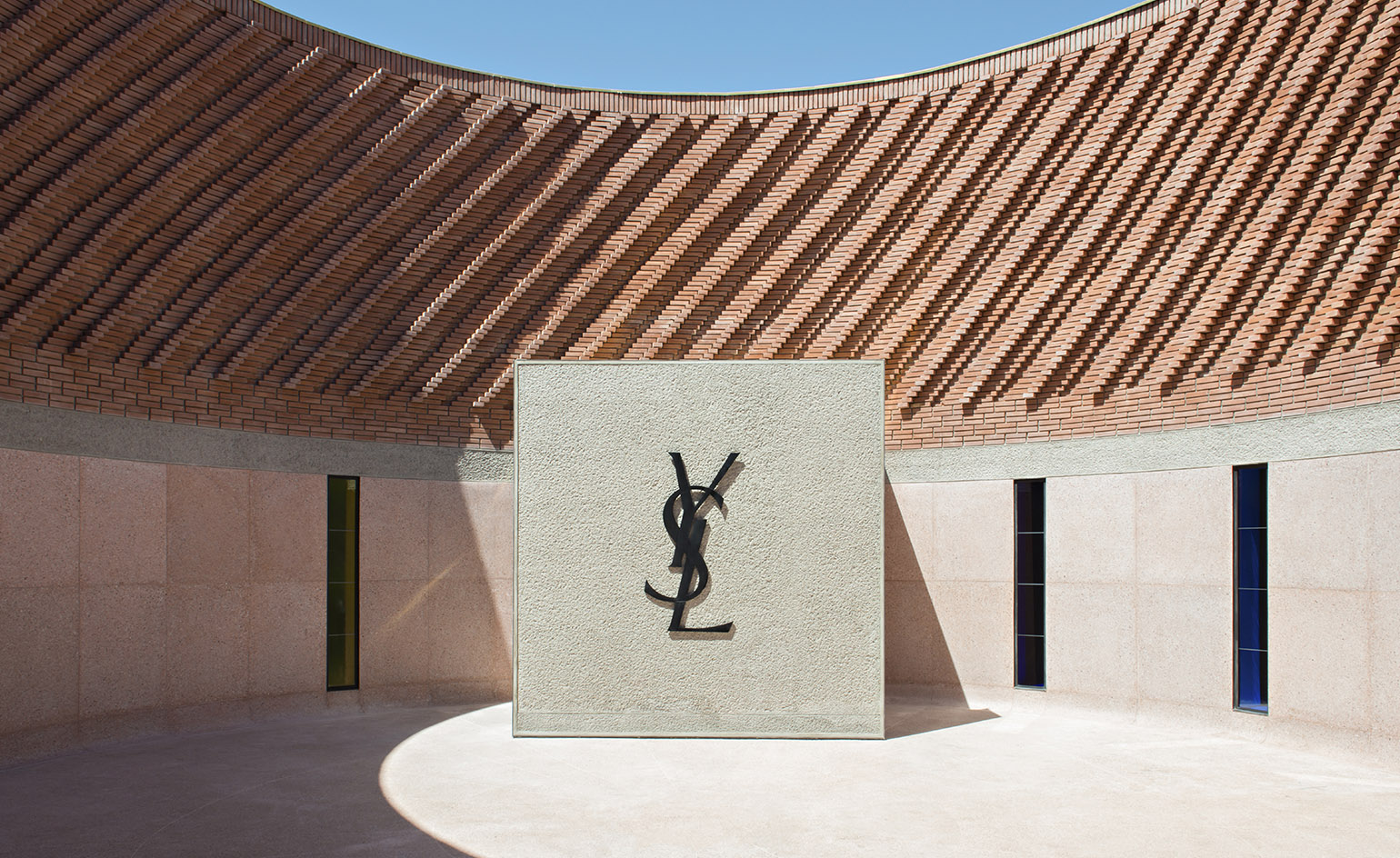
The KO Studio-designed circular patio of the new YSL museum in Marrakech.
INFORMATION
For more information, visit the Musée Yves Saint Laurent website, the Royal Mansour website and the Kasbah Tamadot website
ADDRESS
Rue Yves Saint Laurent
Marrakech 40000
Wallpaper* Newsletter
Receive our daily digest of inspiration, escapism and design stories from around the world direct to your inbox.
Ali Morris is a UK-based editor, writer and creative consultant specialising in design, interiors and architecture. In her 16 years as a design writer, Ali has travelled the world, crafting articles about creative projects, products, places and people for titles such as Dezeen, Wallpaper* and Kinfolk.
-
 Put these emerging artists on your radar
Put these emerging artists on your radarThis crop of six new talents is poised to shake up the art world. Get to know them now
By Tianna Williams
-
 Dining at Pyrá feels like a Mediterranean kiss on both cheeks
Dining at Pyrá feels like a Mediterranean kiss on both cheeksDesigned by House of Dré, this Lonsdale Road addition dishes up an enticing fusion of Greek and Spanish cooking
By Sofia de la Cruz
-
 Creased, crumpled: S/S 2025 menswear is about clothes that have ‘lived a life’
Creased, crumpled: S/S 2025 menswear is about clothes that have ‘lived a life’The S/S 2025 menswear collections see designers embrace the creased and the crumpled, conjuring a mood of laidback languor that ran through the season – captured here by photographer Steve Harnacke and stylist Nicola Neri for Wallpaper*
By Jack Moss
-
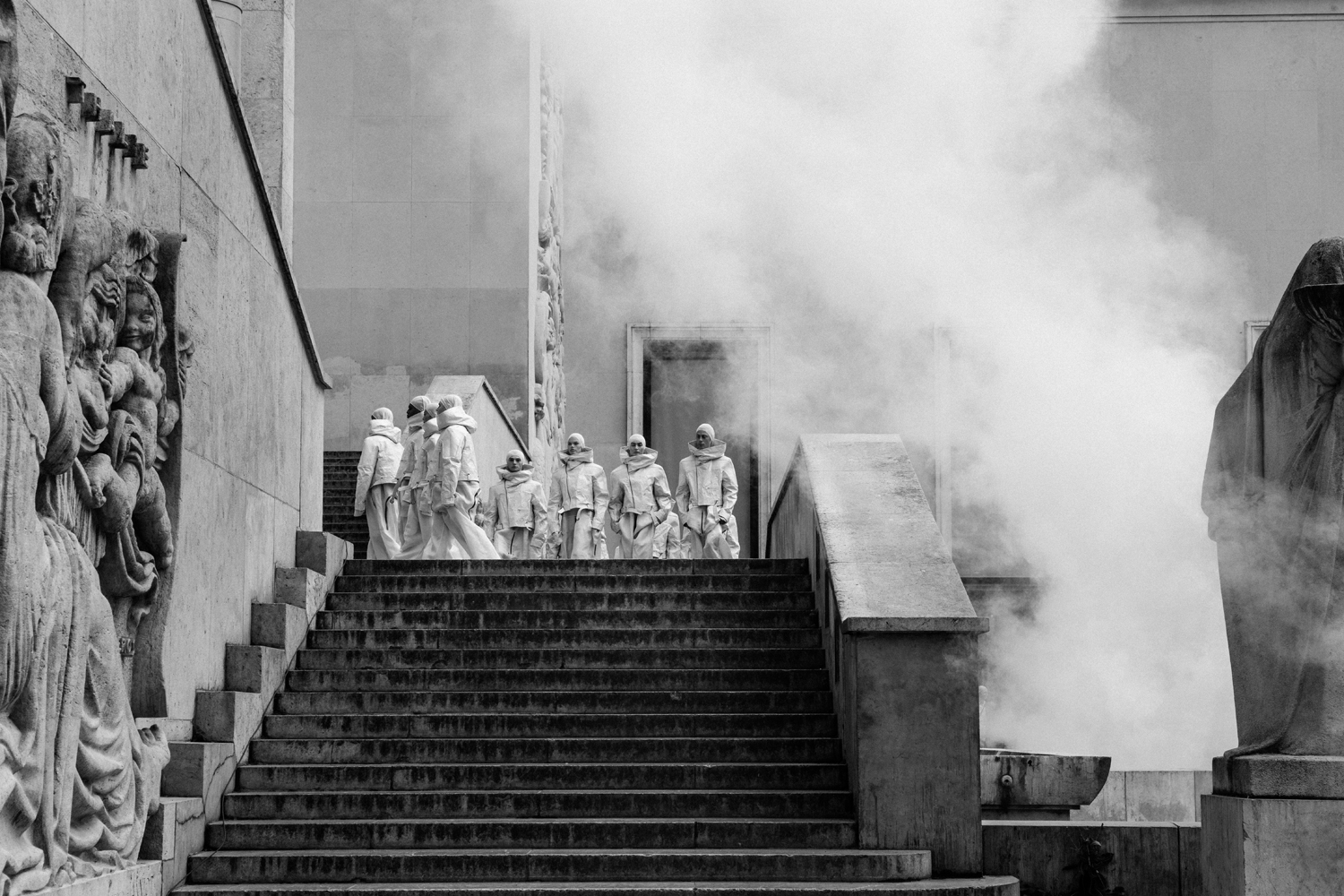 The Wallpaper* style team pick their fashion moments of 2024
The Wallpaper* style team pick their fashion moments of 2024The Wallpaper* style editors reflect on their best fashion moments of 2024, from Rick Owens’ 200-strong Hollywood epic to an Eyes Wide Shut-inspired JW Anderson show, and a slicked-back beauty look at Saint Laurent
By Jack Moss
-
 Fashionable Christmas baubles to accessorise this year’s tree, from Bottega Veneta to Loewe
Fashionable Christmas baubles to accessorise this year’s tree, from Bottega Veneta to LoeweSelected by the Wallpaper* style team, a gleaming array of Christmas baubles for fashion fans featuring fantastical designs from Bottega Veneta, Loewe, Prada and more
By Jack Moss
-
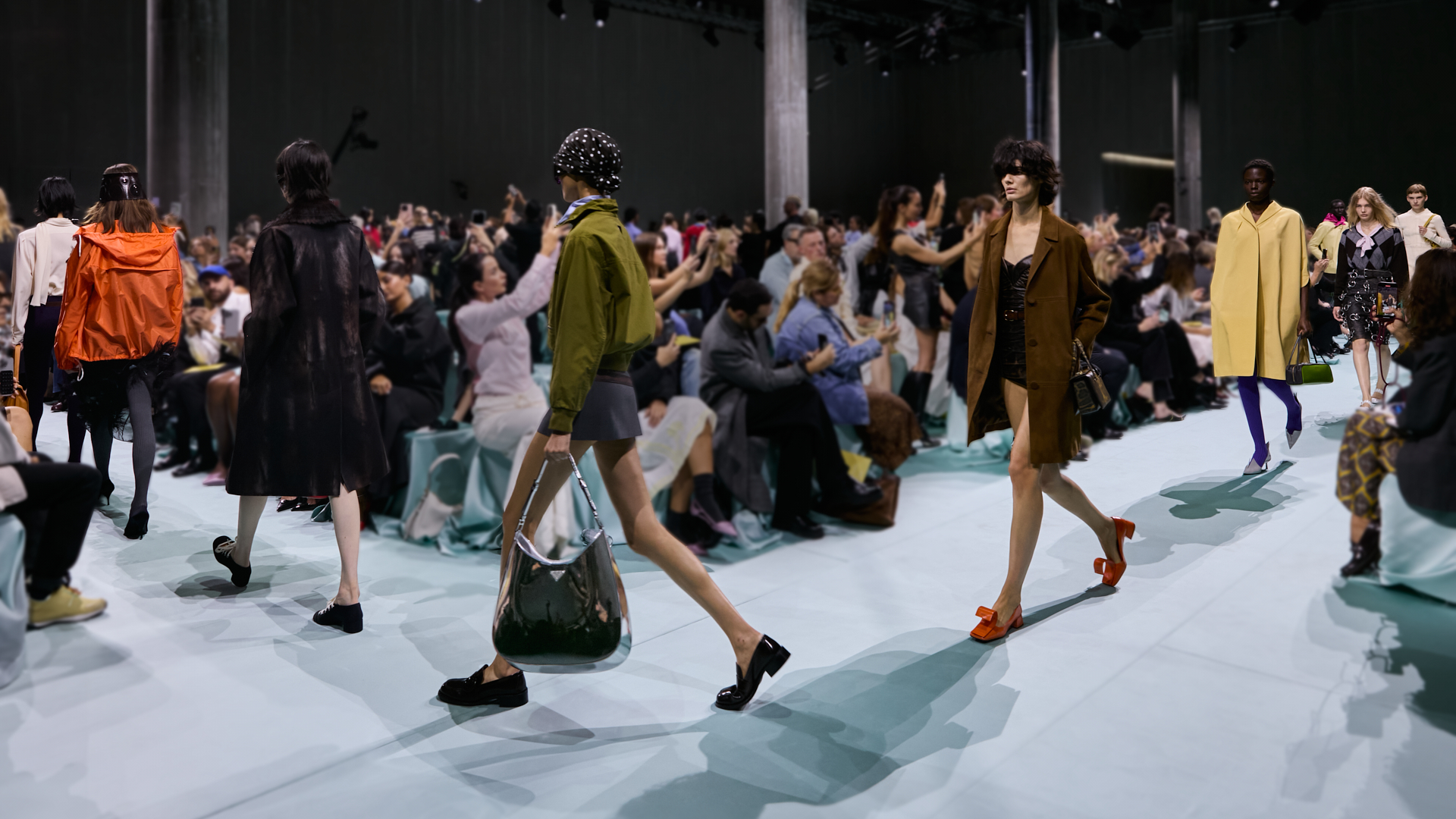 The Wallpaper* S/S 2025 trend report: ‘A rejection of the derivative and the expected’
The Wallpaper* S/S 2025 trend report: ‘A rejection of the derivative and the expected’Wallpaper* fashion features editor Jack Moss unpacks five trends and takeaways from the S/S 2025 shows, which paid ode to individual style and transformed the everyday
By Jack Moss
-
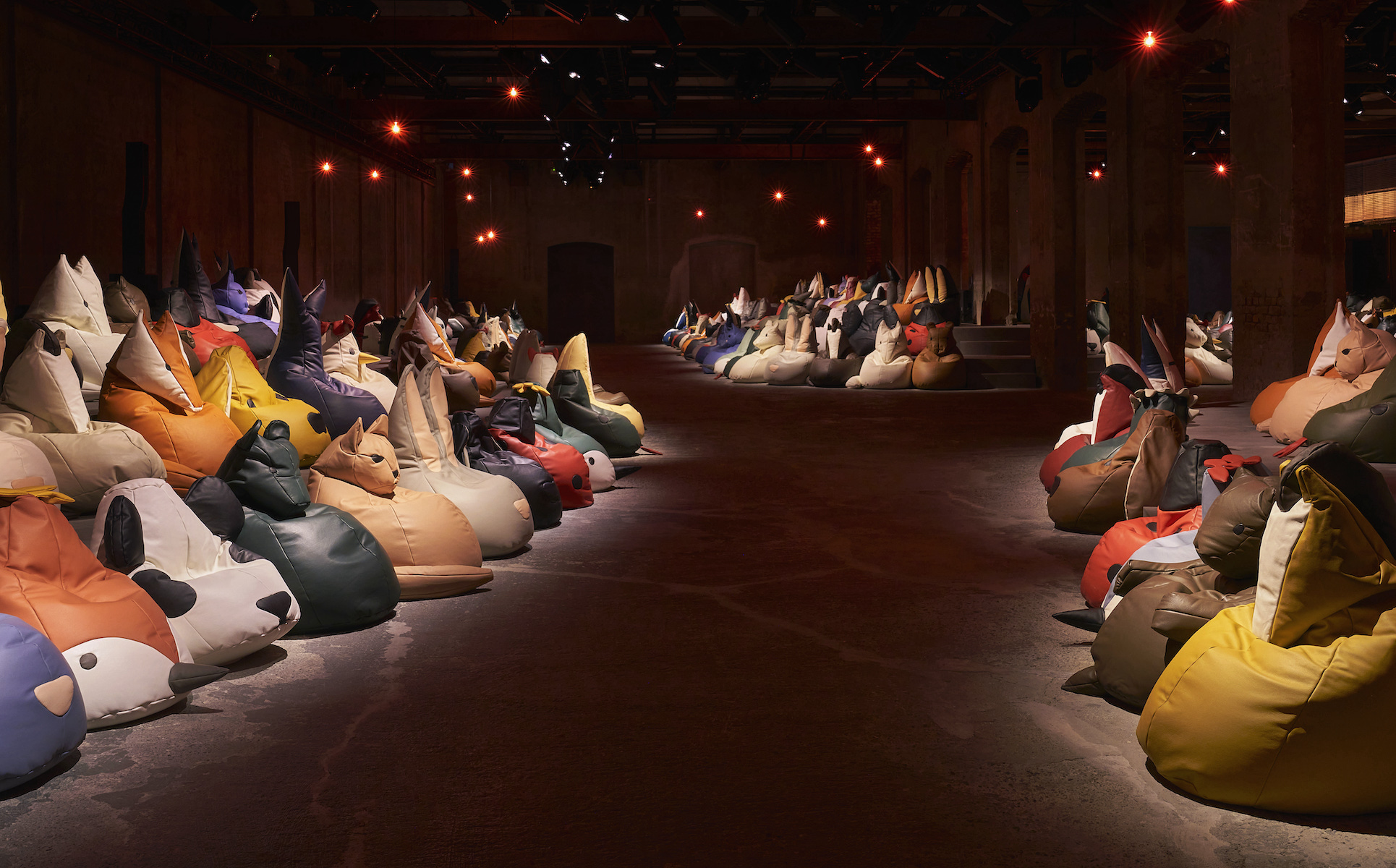 The breathtaking runway sets of S/S 2025, from beanbag animals to a twisted living room
The breathtaking runway sets of S/S 2025, from beanbag animals to a twisted living roomWallpaper* picks the best runway sets and show spaces of fashion month, which featured Bottega Veneta’s beanbag menagerie, opulence at Saint Laurent, and artist collaborations at Acne Studios and Burberry
By Jack Moss
-
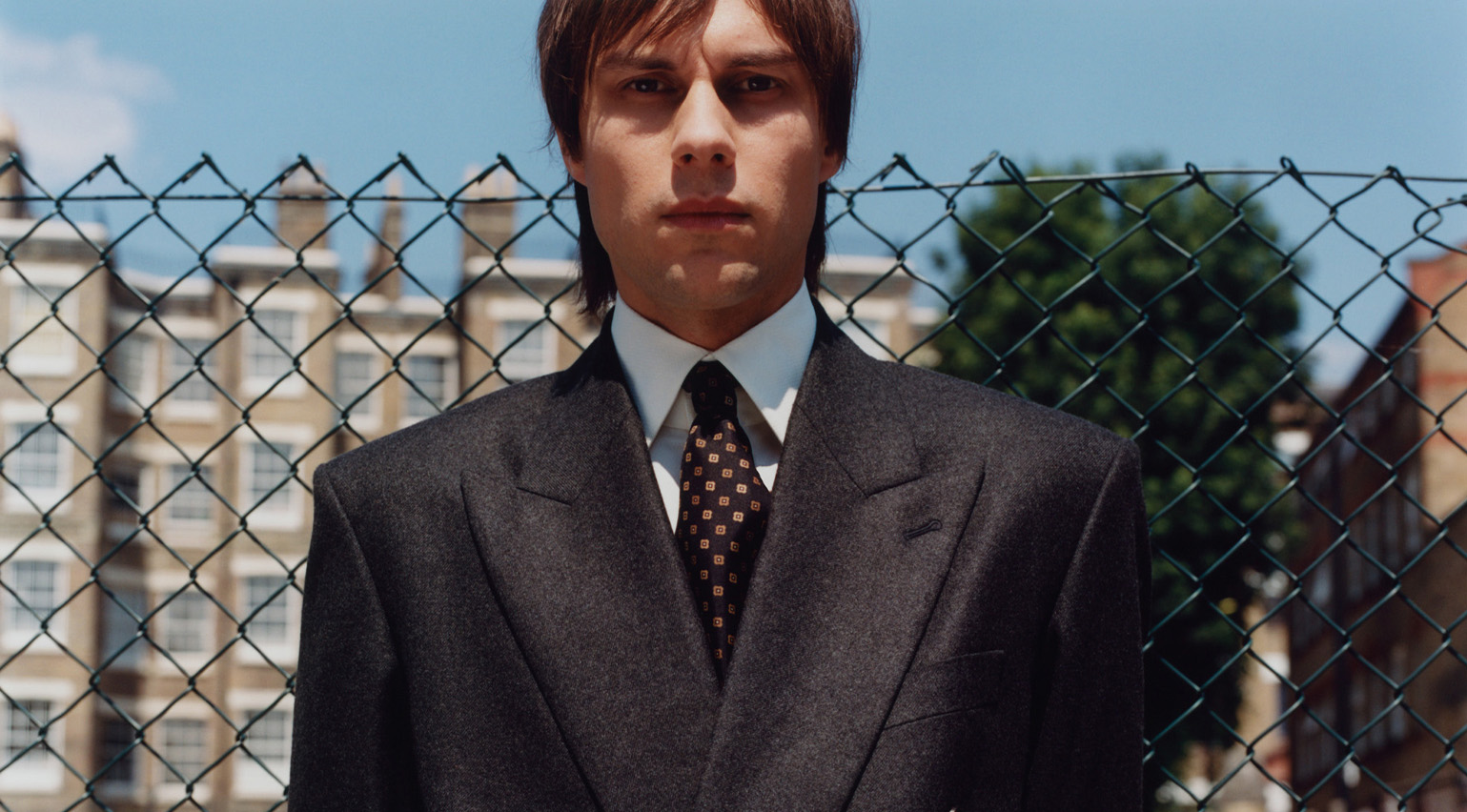 ‘There is a renewed desire to be elegant’: why men’s tailoring is more relevant than ever
‘There is a renewed desire to be elegant’: why men’s tailoring is more relevant than everFar from a dying art form, men’s tailoring is gaining momentum thanks to a diverse array of designers who are using the garment to change the way we move and feel, says Simon Chilvers
By Simon Chilvers
-
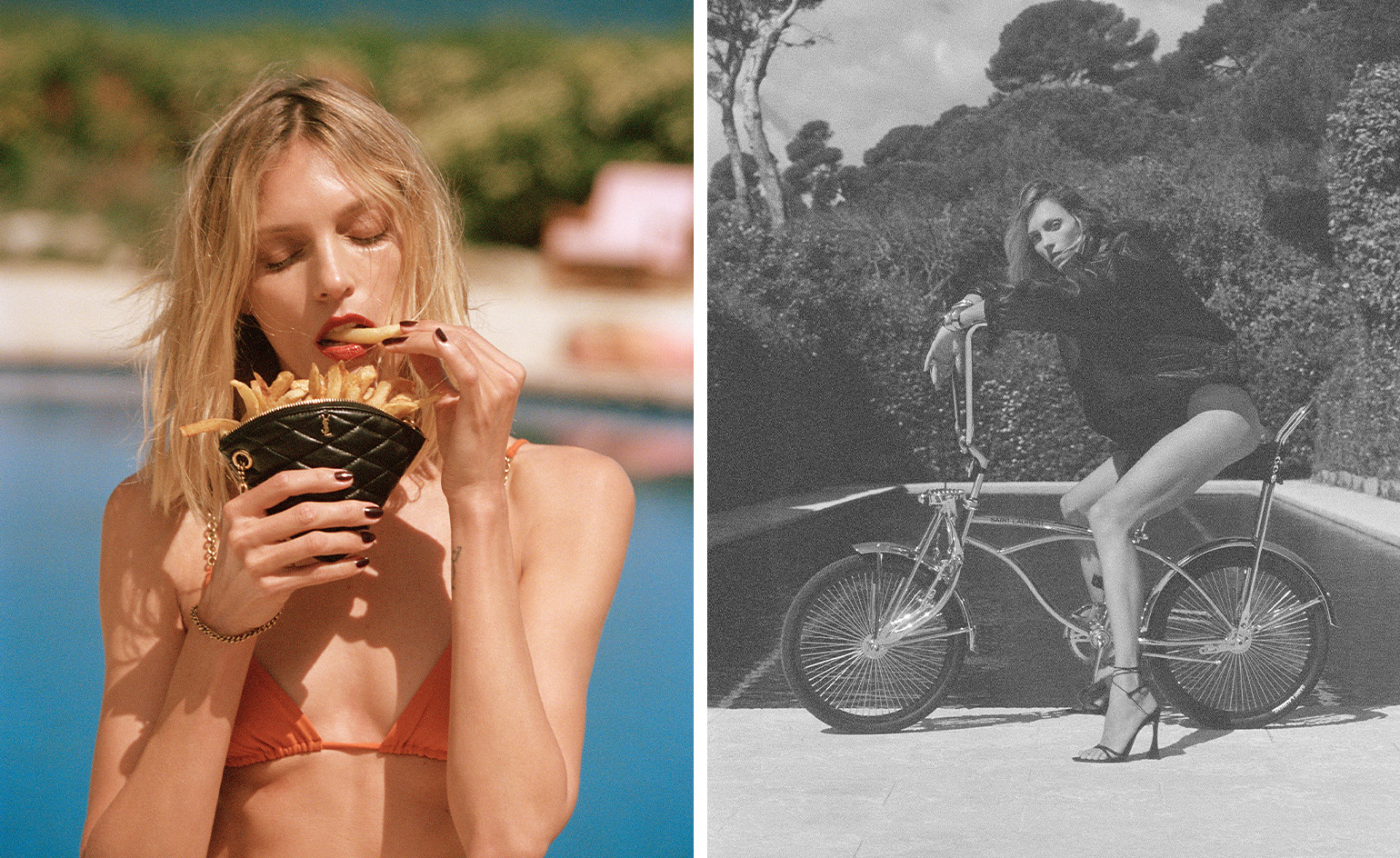 Saint Laurent’s ‘Tan Lines’ collection is made for the heat of summer
Saint Laurent’s ‘Tan Lines’ collection is made for the heat of summerA host of warm-weather essentials get the Saint Laurent treatment in Anthony Vaccarello’s ‘Tan Lines’ capsule – from bikes and tennis balls to swimwear and handbags
By Jack Moss
-
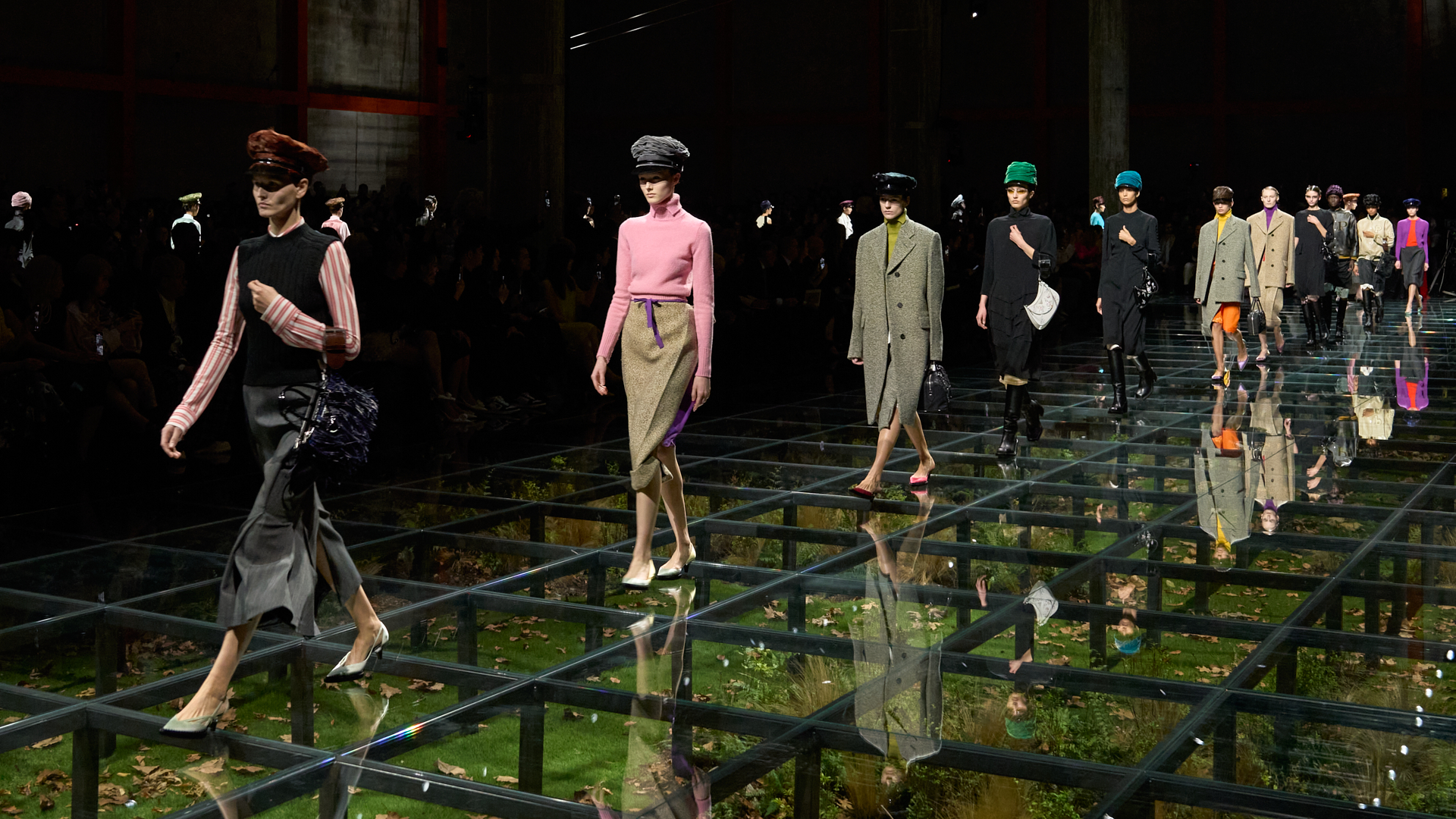 Women’s Fashion Week S/S 2025: what to expect
Women’s Fashion Week S/S 2025: what to expectNext week sees the arrival of Women’s Fashion Week S/S 2025, with stops in New York, London, Milan and Paris. Here, our comprehensive guide to the month, from Alaïa’s arrival in New York to Alessandro Michele’s Valentino debut
By Jack Moss
-
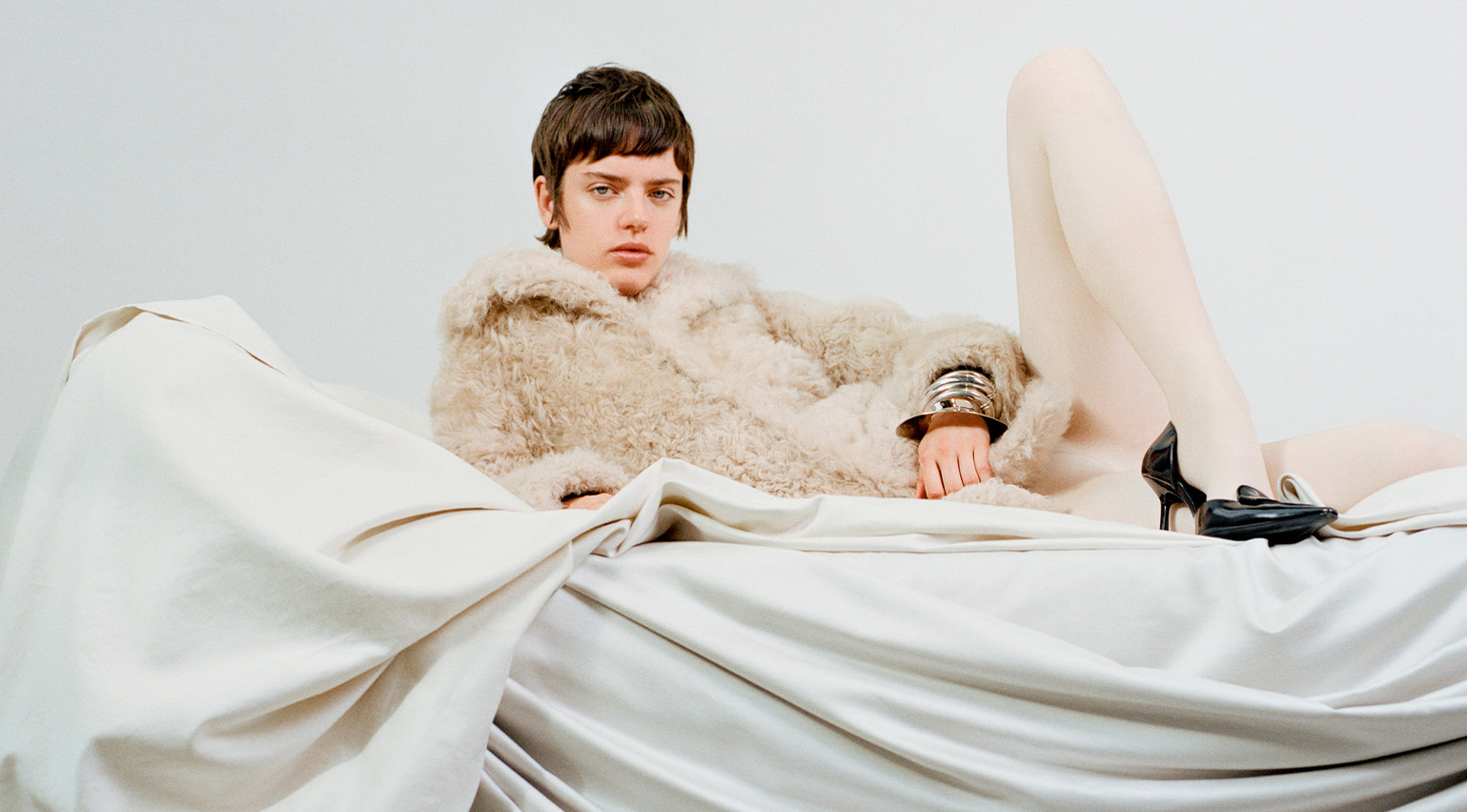 Pre-Fall 2024’s defining looks combine sharp silhouettes with a soft touch
Pre-Fall 2024’s defining looks combine sharp silhouettes with a soft touchA play on texture defines the Pre-Fall 2024 collections, seeing clean lines and pin-sharp tailoring meet soft-to-the-touch fabrics. Here, photographer Mattia Parodi captures the season’s best looks
By Jack Moss